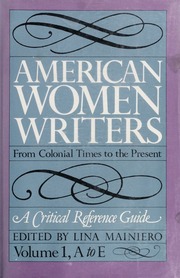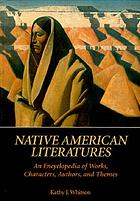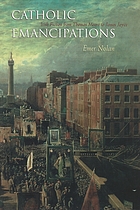
 American Women Writers : a critical reference guide from colonial times to the present (5 volumes)
by
American Women Writers : a critical reference guide from colonial times to the present (5 volumes)
by
 Black American Writing from the Nadir : the evolution of a literary tradition, 1877-1915
by
Black American Writing from the Nadir : the evolution of a literary tradition, 1877-1915
by
See also (under African American Women) the book "Doers of the Word" : African-American women speakers and writers in the North (1830-1880) by Carla L. Peterson.
See also (under African American Women) the book Harlem Renaissance and Beyond : literary biographies of 100 Black women writers, 1900-1945 edited by Lorraine E. Roses and Ruth E. Randolph
See also on this page (under Children's Literature) African American Children's Literature and (under Young Adult Literature) Young Adult Fiction by African American Writers, 1968-1993 : a critical and annotated guide edited by Deborah Kutenplon and Ellen Olmstead
 Native American Literatures : an encyclopedia of works, characters, authors, and themes
by
Native American Literatures : an encyclopedia of works, characters, authors, and themes
by
Librarian's note: A wealth of further resources, including lists of Jewish Nobel Prize in Literature laureates and Jewish authors from around the world, can be found in the Literature pages of the Guide to Jewish Studies.
 Catholic Emancipations
by
Catholic Emancipations
by
"Misunderstanding Thoreau: Reading Neurodiversity in Literature and in Life" -LitHub.com, August 23, 2021
You can search the Children's and Young Adult sections of the library in the catalog using the search terms b8:children's and b8:"young adult", or to get even more specific, by combining them with another search term using Boolean Operators (AND, OR, NOT). (You can access the catalog through the library home page, or use the search bar below.)
This work is licensed under CC BY-NC-SA 4.0